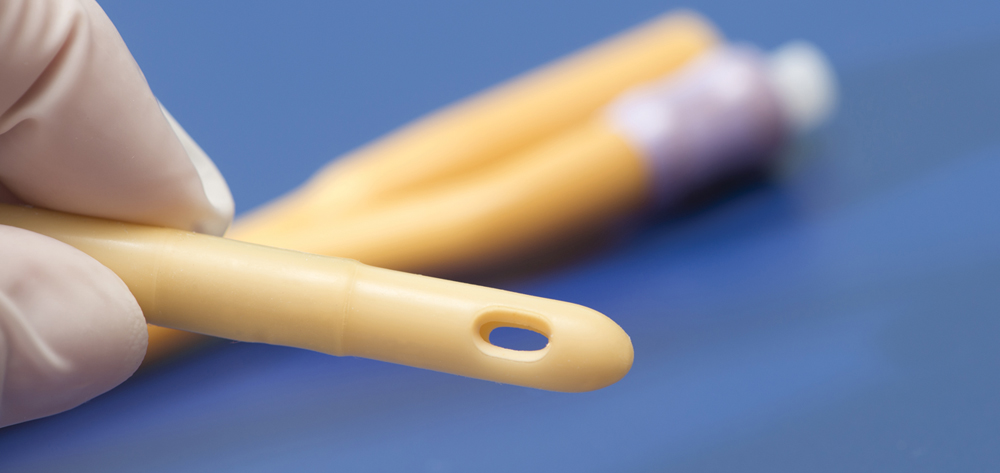NOTE FROM THE EDITOR: The American Nurses Association (ANA) led an initiative in collaboration with the Centers for Medicare & Medicaid Services’ Partnership for Patients to develop a unique tool to prevent catheter-associated urinary tract infections (CAUTIs). Developed through a technical expert panel of nurses, the tool is available in this Special Report.
If you work in a medical-surgical unit, an intensive care unit, or an operating room, you need to understand your vital role in preventing CAUTIs. ANA has developed an evidence-based CAUTI prevention tool to aid bedside clinicians in preventing UTIs during everyday clinical practice. Expected outcomes from using this tool are preventing harm, saving lives, and lowering costs.
Implementing the tool into practice helps bedside nurses make sound clinical decisions related to indwelling urinary catheter (IUC) use. Consistent use of the tool highlights appropriate clinical questions and prevents inappropriate short-term IUC use. The tool prompts nurse-driven timely catheter removal and promotes best practices for catheter insertion, maintenance, and removal. It also guides nurses through key components of complete bladder assessment. Differentiating and prioritizing interventions based on individualized assessment findings related to complete bladder emptying, urinary retention, and incontinence are important in preventing CAUTIs.
How one hospital operationalized the tool
This article shares strategies used to operationalize the CAUTI prevention tool into nursing practice through the nursing education’s skin champion program at St. Francis Hospital, The Heart Center®, in Roslyn, New York—part
of Catholic Health Services Long Island (CHSLI). In 2012, this award- winning, 300+-bed, acute-care hospital was recognized as a top-performing National Database of Nursing Quality Indicators® hospital.
St. Francis had tried many strategies to decrease IUC use before serving as a pilot hospital to review the ANA CAUTI prevention tool. Its infection prevention team invited the wound, ostomy, and continence nurse (WOCN) to join the CAUTI prevention team and offer suggestions and alternatives to current strategies. Leading the initiative, this team included an infection prevention nurse from each of CHSLI’s acute- and long-term care hospitals. The team also invited WOCNs and nurse educators from all CHSLI hospitals. Over a 6-week period, two face-to-face meetings and three conference calls were held. The result was an updated IUC policy and protocol to promote early IUC removal, subsequently approved by chief nursing officers and then medical executive committees (MECs) at the individual CHSLI hospitals.
In addition, CHSLI made several catheter-related product changes. All catheter insertion kits were converted to include urometers instead of drainage bags, to decrease incidence of broken systems. Also, the male external catheter was converted to a new product with silicone adhesive (available in multiple sizes) as an alternative to inappropriate IUC insertion.
As these changes were implemented, the skin champion program was updated to include didactics related to CAUTI prevention. Data-collection metrics related to IUC use during the skin champion’s monthly pressure-ulcer point-prevalence study were added. Education focused on stabilizing the catheter, maintaining a closed system, following manufacturer guidelines for insertion techniques, ensuring the tubing was kink-free, and maintaining the urometer below bladder level and off the floor. When these efforts successfully reduced IUC insertion rates, the hospital’s catheter-use rates began to
decrease.
Developing the ANA CAUTI prevention tool
In the first quarter of 2014, St. Francis’ WOCN specialist (the author of this article) was recruited to be part of ANA’s technical expert panel (TEP) for developing an evidence-based CAUTI prevention tool. (See Technical expert panel members.) The TEP was charged with gathering evidence for tool development, which included guidelines from the Centers for Disease Control and Prevention (CDC), a literature review, and expert consensus. The expert consensus was carried out by independent TEP online input, teleconferences, face-to-face interactions, and meetings. The process involved a split-panel expert analysis, a clinical pilot, and revisions. The clinical pilot included evaluation from three hospitals in the Hospital Engagement Network, 14 other hospitals, and three clinical liaisons; the liaisons served in the roles of WOCN, infection prevention RN, and quality-improvement manager. St. Francis’s WOCN was one of the clinical liaisons, helping to bring tool evaluation in the clinical setting to her hospital.
The evaluation strategy for the tool’s pilot program was to have a nursing education group use the tool when IUC insertion was ordered. If the patient’s clinical criteria met CDC insertion recommendations, the clinical nurse specialist or nurse educator buddied with another clinical RN to insert the catheter using the ANA insertion checklist. For each insertion, they completed a questionnaire to evaluate the tool’s effectiveness and document feedback for the TEP.
At that point, the CAUTI prevention tool was fully integrated into the skin champion program at St. Francis. The skin champions expanded their personal knowledge base on how to assess for complete bladder emptying when an IUC is removed. They also gained a better understanding of the rationale for straight catheterization—specifically how this procedure can be used short-term to retrain the flaccid bladder and help improve urinary function. Nurses found the male external catheters useful for patients who had urinary incontinence without underlying retention issues. They also requested new products, such as female urinals and more bladder scanners.
Clearly, St. Francis’ skin champion program was evolving and the hospital culture was changing. Nurses began to understand that IUCs are needed only in specific clinical situations, as outlined by the CDC.
Developing a policy for system-wide use
After the CAUTI prevention tool was released publicly at the 2015 ANA Quality Conference in Orlando, it was used to develop a policy for use across the CHSLI system. Infection prevention RNs and WOCNs from all CHSLI hospitals collaborated to develop a system policy and procedure for IUC insertion, maintenance, and removal. The policy is complete and currently is being presented to the MEC for approval. Order sets are being built into the electronic health record (EHR) and an education strategy is in development. The policy will be integrated into the EHR, establishing an order set for IUC insertion, maintenance, and removal.
At St. Francis, outcomes for hospital-acquired CAUTI rates, IUC use rates, and compliance with evidence-based IUC insertion and maintenance are
monitored through several mechanisms.
- The infection prevention nurse team monitors all
CAUTI incidence rates. - The WOCN asks the skin champion team to collect data on IUC use and tracks and trends rates during monthly point-prevalence studies.
- The nursing education and infection prevention departments collaborate with the IUC vendor to conduct annual point-prevalence and insertion assessments. This deeper examination of all indwelling catheters, types of maintenance performed, and which units are inserting IUCs yields greater insight into the effectiveness of CAUTI prevention education.
Changing the culture
The ANA CAUTI prevention tool has helped change the culture around IUC insertion at St. Francis. Our nurses now have a better understanding of why CAUTI prevention is so important—and how they can help improve patient outcomes by always asking “Why is this IUC being inserted?”
Selected reference
American Nurses Association. ANA CAUTI Prevention Tool. 2015. http://nursing
world.org/ANA-CAUTI-Prevention-Tool
Chenel Trevellini is a Certified Wound Ostomy Continence Nurse (CWOCN) at St. Francis Hospital, The Heart Center®, in Roslyn, New York. She served on the technical expert panel to develop the CAUTI tool.
Click to read the next article: Operationalizing the ANA CAUTI prevention tool in acute-care settings



















